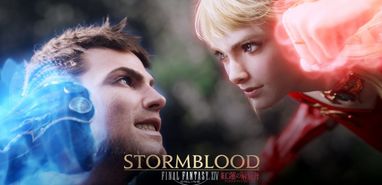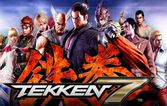
In short, absolutely.
The second expansion for FFXIV has arrived just shy of nine months after its reveal at the 2016 Final Fantasy Fan Festival. Hallmarked with a bittersweet air about it as Square ends its support for the PS3 edition of the game, Stormblood ups the stakes of fantasy storytelling by completely sidestepping most of the tired and well-trodden clichés plaguing modern fantasy tales. That’s not to say the series is missing its trademark oddities and charm, but the tightened focus on character development gives it an edge over a wide swath of its competitors.
The upsides
 At its core, Stormblood is what you would expect from the sophomore expansion to a five-year-old MMORPG entering its experimental phase. New shake-ups to tried and true formulas are almost guaranteed to hit with the second major wave of added content no matter the game, but unlike some of its counterparts, most of those changes aren’t drastic enough to alienate veterans yet still hold enough appeal to tempt newcomers.
At its core, Stormblood is what you would expect from the sophomore expansion to a five-year-old MMORPG entering its experimental phase. New shake-ups to tried and true formulas are almost guaranteed to hit with the second major wave of added content no matter the game, but unlike some of its counterparts, most of those changes aren’t drastic enough to alienate veterans yet still hold enough appeal to tempt newcomers.
The game keeps its focus on MMO-style combat and revolves around managing cooldowns and rotations of skills during combat while encouraging exploration and light role-playing between encounters. It may fall prey to the standard batch of occasional fetch-quests, but FFXIV has always kept a strong focus on its story front and center.
Trying to sum up that story without a bevy of spoilers and a Ph.D. in fantasy literature would be a monumental task at best, but it would also rob one of the biggest draws for the game. Think of Stormblood as a story-based continuation of a single player game rather than a mechanics-oriented expansion and you’re on the right track.
That’s not to say it’s devoid of new mechanics or that you have to play it solo, but it tells a story that reflects on its past focus of grandiose stories and boils it down to a string of character studies that shake up what you might have come to expect from a sword and sorcery epic.
Visually, it’s still just as flashy and polished as the series title would lead you to expect. The expansion’s hub city of Kugane manages to feel authentically Japanese and historically appealing without feeling beholden to any one time period. Eclectic tastes come together to provide an odd ménage of boss encounters, but the story themes that connect them offer up excuses that are interesting enough.
Even the soundtrack enters the fray, stretched across traditional orchestral epics with small hints of multicultural flavors that keep its soundscape engaging and breaks up the fatigue of constant musical barrages with quiet, introspective instrumentals. If they weren’t spoilers, the boss themes for this expansion would be littered throughout the review. Composer Masayoshi Soken continues to show off and it’s worth launching a new expansion just to coax another soundtrack out of him.
Fan favorite classes return in the form of the Red Mage and Samurai, giving even more DPS-heavy options to a game already drowning in them, but the Red Mage blends two forms of magic with physical combat in a way that helps distract you from just how damage-heavy an average team is bound to be.
Samurai, on the other hand, gives you two-handed swordplay goodness with a light dose of Auron cosplay potential, but it’s hard to pretend there might not have been a more deserving returning class to showcase than one as straightforward as yet another swordsman.
The downsides
If you tried to play Stormblood during launch week, you’re probably familiar with how poorly Square Enix anticipated server load and queue times. It’s settled down to some degree, but it’s hard to ignore technical issues of that magnitude for a second expansion release, let alone with a series as expansive as Final Fantasy.
Aside from technical issues and the usual MMO quirks of click-and-wait combat or quests that boil down to playing a fantasy version of Kiki’s Delivery Service, veterans of the series may find that not enough has been changed in the game’s formula.
Beyond a few new classes and landscapes the core experience for FFXIV is still distinctly unchanged from previous iterations and there isn’t much to bring relapsed players back into the fold for very long if the story doesn’t hold their attention. Thankfully, Stormblood knows this and plays to its strengths rather than diving too deeply into a side effort full of gimmicks and forgettable encounters.






By Andrej Kovacevic
Updated on 4th February 2020